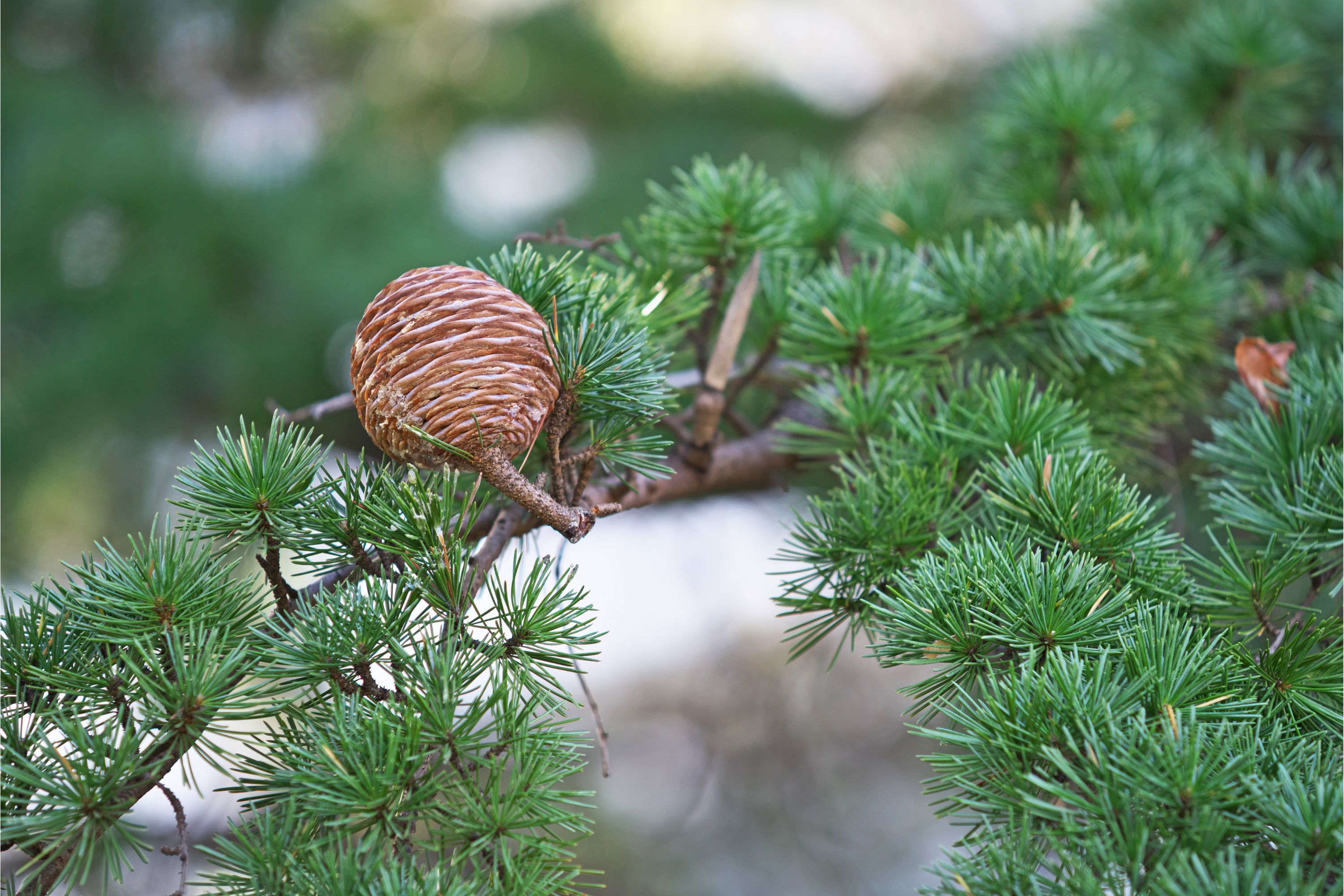Deodar cedar
(Cedrus deodara)

Description
Cedrus deodara, the deodar cedar, Himalayan cedar, or deodar, is a species of cedar native to the Himalayas. It grows at altitudes of 1,500–3,200 m (5,000–10,000 ft). It is a large evergreen coniferous tree reaching 40–50 m (131–164 ft) tall, exceptionally 60 m (197 ft) with a trunk up to 3 m (10 ft) in diameter. It has a conic crown with level branches and drooping branchlets. The leaves are needle-like, mostly 2.5–5 cm (0.98–1.97 in) long, occasionally up to 7 cm (2.8 in) long, slender (1 mm (0.039 in) thick), borne singly on long shoots, and in dense clusters of 20–30 on short shoots; they vary from bright green to glaucous blue-green in colour. The female cones are barrel-shaped, 7–13 cm (2.8–5.1 in) long and 5–9 cm (2.0–3.5 in) broad, and disintegrate when mature (in 12 months) to release the winged seeds. The male cones are 4–6 cm (1.6–2.4 in) long, and shed their pollen in autumn. The botanical name, which is also the English common name, derives from the Sanskrit term devadāru, which means "wood of the gods", a compound of deva "god" and dāru "wood and tree". The species natively occurs in East-Afghanistan, South Western Tibet, Western Nepal, Northern Pakistan, and North-Central India.
Taxonomic tree:







